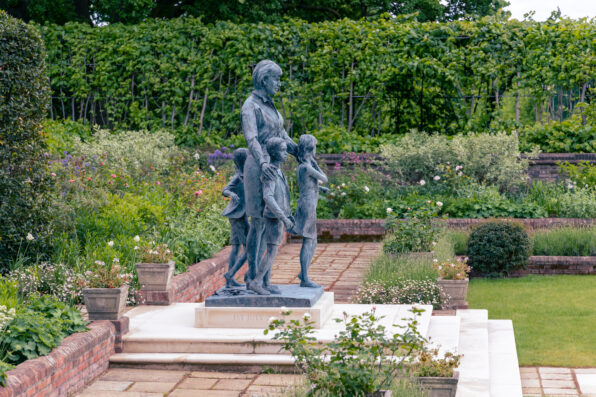Princess Diana Left The World A Much Better Place Than When She Entered It, And Here’s A Look At How She Truly Changed The World For Good

This past August marked twenty-five years since Princess Diana tragically lost her life. But, in the two and a half decades since her untimely passing, Diana has remained a beloved figure throughout the world.
After marrying Prince Charles in 1981, she was catapulted to international fame. Diana did not let the immense status affect her character, though. Instead, she capitalized on the unique opportunity to raise awareness about countless causes.
First and foremost, Diana was known for her dedication to fundraising. And at one point in time, she was even affiliated with over one hundred charities that focused on a range of issues– from leprosy to mental health to domestic violence.
She did cut ties with a majority of these charities following her divorce from Prince Charles in 1996 in order to lead a more private life. However, Diana still supported six charities up until her death.
And even after her passing, when the charities initially suffered a funding crisis, the shortfall was not long-lived.
Instead, Diana’s philanthropic legacy lived on since the charities received various grants from the Diana Princess of Wales Memorial Fund– amounting to over one million dollars post-mortem.
Other humanitarian causes that Princess Diana pioneered include her advocacy against landmines, her work in stopping the stigma surrounding HIV/Aids and leprosy, as well as her dedication to helping homeless people.
Diana did not just throw money at these issues, though. She actually showed up and interacted with the populations most affected by them.
In 1997, Diana visited Angola and Bosnia. She donned a bomb-proof chest plate and visor while wading through a minefield in order to fully understand what residents of the South African country were faced with.

beketoff – stock.adobe.com – pictured above is a statue of Princess Diana in the Sunken Garden at Kensington Palace
Sign up for Chip Chick’s newsletter and get stories like this delivered to your inbox.
“I had read the statistics that Angola has the highest percentage of amputees anywhere in the world; that one person in every three hundred and thirty-three lost a limb– most of them through land mine explosions,” Diana said to journalists in Angola.
“But that had not prepared me for reality.”
Photos of Diana in the minefield spread throughout the press like wildfire, and she was largely credited for the success of the Ottawa Mine Ban Treaty.
The Treaty began accepting signatures just months after Diana passed away, and ever since then, it has gained the support of over one hundred and twenty-two countries that prohibit the production, stockpiling, use, and transfer of landmines.
As for HIV/Aids and Leprosy, Diana worked to undo the severe misinformation and ignorance that consumed the public.
In 1987, she opened England’s very first Aid’s ward. There, she shook the hands of Aids patients without gloves in hopes of dispelling the myth that the virus could be transmitted through purely physical contact.
Diana also visited leprosy hospitals in Zimbabwe, India, and Nepal to raise awareness about the disease– in which sores and lumps form on the skin. If left untreated, leprosy can cause nerve damage and limb deformities– another medical condition that frightened the public.
“It has always been my concern to touch people with leprosy. Trying to show in a simple action that they are not reviled, nor are we repulsed,” Diana explained, according to the Leprosy Mission.
Finally, Diana worked hard to get homeless people in England off of the streets. She was a patron of the charity Centrepoint, where she worked to help adolescents and young adults between the ages of sixteen and twenty-five obtain shelter, food, and find a job.
Diana also instilled an awareness of this important cause in her children by taking her sons, Prince Harry, and Prince William, to visit Centrepoint’s shelters.
Then, in 2005, William decided to continue his mother’s legacy by becoming Centrepoint’s new patron and sleeping on the streets of London in 2009 to gain a truer understanding of homeless people’s hardships.
“My mother introduced that sort of area to me a long time ago. It was a real eye-opener, and I am very glad she did. It has been something I have held close to me for a long time,” William told the Telegraph that year.
So, whether it be through Diana’s own parenting, her range of charitable ties, or simply her way of inspiring people across the globe, the Princess left the world a much better place than when she entered it. And her legacy continues to change society for the better today.
If true crime defines your free time, this is for you: join Chip Chick’s True Crime Tribe
There Was Only One Woman Who Has Ever Received The Medal of Honor, And This Is Her Incredible Story
More About:Chicks We Love